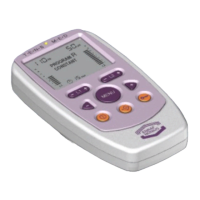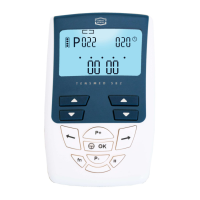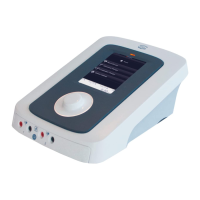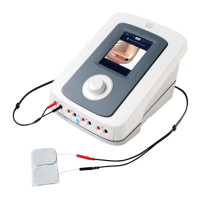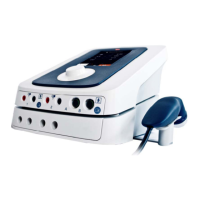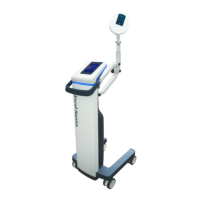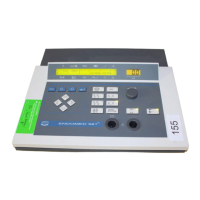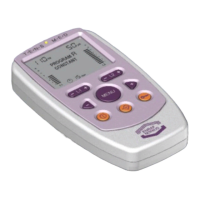
Do you have a question about the Enraf Nonius TensMed 911 and is the answer not in the manual?
| operating temperature range | 10° to 40° C |
|---|---|
| operating relative humidity | 10 to 90 % non condensing |
| operating atmospheric pressure | 500 to 1060 hPa |
| storage temperature range | -10° to +50° C |
|---|---|
| storage relative humidity | 10 to 100 % |
| storage atmospheric pressure | 500 to 1060 hPa |
| dimensions | 144 x 80 x 27.5 mm |
|---|---|
| weight | 180 gram |
Introduces the TensMed 911 as a 2-channel electrotherapy apparatus for pain management.
Explains the manual's purpose, scope, and provides liability and disclaimer information.
Lists general warnings and cautions for safe operation, environment, and handling of the device.
Defines the primary use of the TensMed 911 for pain management and its therapeutic goals.
Details TENS therapy usage, restrictions, contraindications, and potential adverse effects.
Describes the specific asymmetrical biphasic pulsed current waveform used by the device for TENS applications.
Lists standard and optional accessories included with or available for purchase with the TensMed 911.
Provides step-by-step instructions for installing batteries, connecting leads, and attaching electrodes to the device.
Covers general procedures, considerations, and precautions for applying electrodes to the patient.
Outlines pre-treatment checks, patient preparation, and sensory testing before electrode placement.
Discusses characteristics, impedance, and usage recommendations for self-adhesive electrodes.
Explains potential electrolytic effects from DC components and mitigation strategies.
Details maximum permissible current density, calculation methods, and standards compliance.
Addresses potential patient reactions during electrode connection/disconnection with Constant Current output.
Identifies and explains the functions of all device buttons, keys, and displays.
Guides on how to adjust intensity levels for effective patient treatment and comfort.
Describes automatic safety mechanisms like auto-shutoff, low battery warnings, and keyboard lock.
Highlights extra features such as sound alerts, LED indicators, and battery status notifications.
Explains how to access and reset the device's usage tracking feature for professional monitoring.
Covers fundamental operational modes, including using pre-set programs and manual settings.
Details using pre-set programs (A-I) and manual mode (m) for selecting and initiating treatment.
Lists specific programs with their associated sensations and therapeutic uses for different pain types.
Instructions for manually configuring parameters like frequency, pulse width, and treatment time.
Explains the doctor locking feature to restrict patient access to settings and ensure prescribed parameters.
Details locking the unit to a specific program, allowing only intensity/timer changes by the patient.
Describes locking customized manual programs to prevent unauthorized modifications by the patient.
Covers routine maintenance for cleaning, cable checks, and proper care of electrodes.
Instructions for cleaning the device exterior using appropriate materials and mild detergents.
Advises on regular inspection and maintenance of the patient cable for optimal performance.
Guidance on the care, usage, adhesive reactivation, and lifespan of the self-adhesive electrodes.
Information on device disposal, recycling, and local waste management regulations.
Illustrates the graphical representation of the asymmetrical biphasic TENS waveform used for pain management.
Illustrates the graphical representation of the asymmetrical biphasic burst TENS waveform.
